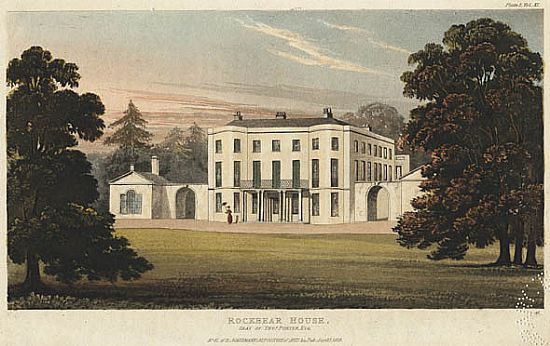English planters & merchants: Thomas Porter
Thomas Porter [1748-1815] was credited by Lord Seaforth as being the key figure in the development of coastal cotton plantations in Guyana:
In 1782 Mr Porter, a ruined man from Tobago owing £10,000 more than he was worth, left to recover a debt for 20 Negroes sold to Mr Elliott of Demerary. Having been accustomed to cotton planting, he acquired Lot 27 [i.e Plantation Paradise] on the east side of the Demerary [i.e.on the East Coast]. His Dutch friends thought him mad but he succeeded in producing cotton, and that of better quality, and made an immense fortune. Over the next ten years this changed the face of the country. [NAS GD/46/17/14]
By 1791 he also owned nearby Porter's Hope (later known as Hope) and Paradise/Hope was the second largest enterprise on the East Coast with 140 enslaved – only Thomas Cumong's plantation Kitty had more, with 169 enslaved (although Cuming had other plantations). [Source: National Archives of the Netherlands]
In 1796 Dr George Pinckard [Notes on the West Indies, London, 1806] noted that Mr Porter 'was one of the earliest planters on the sea coast' and had made a very large fortune.
Thomas had inherited little from his family. His father, Jasper Porter [d1781] of Enmore in Somerset, 'in consequence of being defrauded of [his] birthright . . . by the cruel and unnatural will of [his] Father . . . and by the villainy and artifice of [his] sister' left money in his will for an annual ceremonial burning in effigy of the two at Enmore. [Porter Family papers, Somerset Archive & Record Office, DD\X\PORT/1]
By 1798 Porter owned plantations Hoope, Paradise and one other. A futher plantation was owned by Porter & Jardine.
 He returned to England and by 1800 had purchased Rockbeare in Devon [Trewman's Exeter Flying Post, October 23, 1800]. In 1804 he became High Sheriff of Devon.
He returned to England and by 1800 had purchased Rockbeare in Devon [Trewman's Exeter Flying Post, October 23, 1800]. In 1804 he became High Sheriff of Devon.
Thomas Porter’s family and Guyana
Porter's three sons, Thomas, Henry and William, inherited his plantations in Guyana named as Paradise, Goodfaith, Adventure, Hope and Enmore & his plantation on the north side of Tobago called Perry Wood.
After emancipation in 1834, Thomas Porter II was paid compensation of £19,285 for 385 slaves on plantation Paradise while Henry received £35,940 for the 709 slaves on plantation Enmore. Thomas Porter III [1813-97] was born in Rockbeare. He was educated at Eton and matriculated at Oriel College, Oxford, in June 1831. He served briefly in the Cavalry before going to Demerara in the 1830s.
He spent 25 years running sugar estates there and married Charlotte Wolseley, born Antigua, whose family also had strong connections with Guiana. Thomas, commonly referred to as Tom Porter, was a man of standing in Demerara. He was the Acting Stipendiary Magistrate when 79 of the 83 ex-slave shareholders appeared to sign the Articles of the Agreement for the local government of Victoria Village in 1845. In 1848 he was a local Director of the Demerara Railway Co Ltd: the original section of the railway ran through Enmore. In the 1840s and 50s he was a member of the Court of Policy of British Guiana. In 1855 he was a member when urgent debate took place about the threat from the sea due to lack of proper maintenance of the sea wall.
After various sales and purchases of estates, Tom and Charlotte left British Guiana around 1860. By the end of the 1880s he no longer had an interest in Demerara. In 1897 he left an estate with a net value of £252,145 [equivalent to £19,665,000 in 2006]. Charlotte died in 1906. (Inf. from researcher John Platt)
The Smithsonian (National Museum of African American History & Culture] holds four 'identification buttons' which are said to have been used by Thomas Porter II in Demerara.


